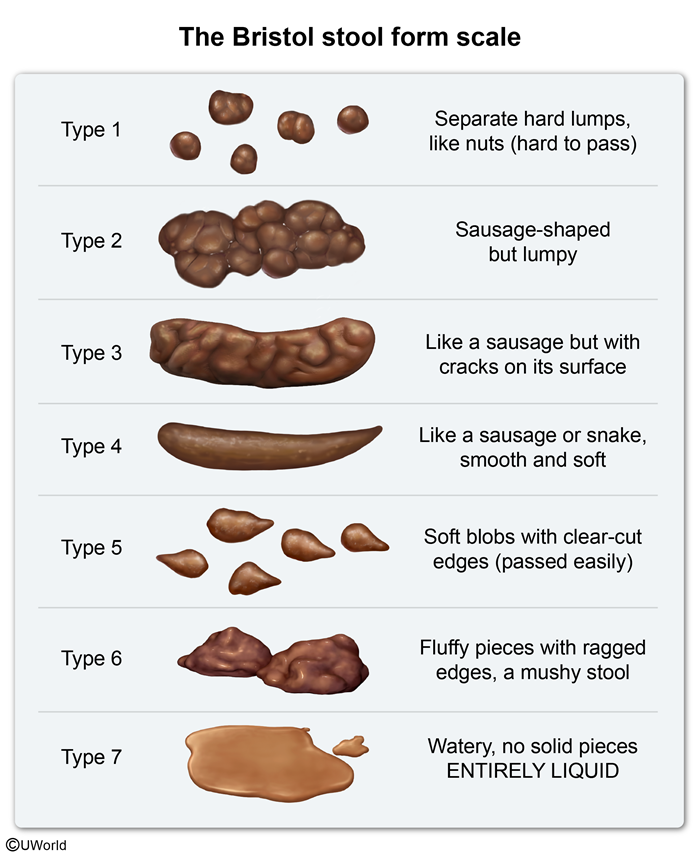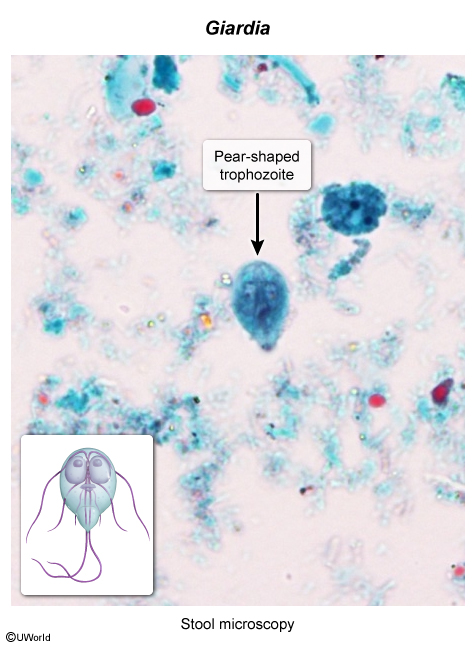Diarrhea
Article Sections
Introduction
Diarrhea is defined as the passage of loose or watery stools with increased frequency, typically >3 times per day. It can result from abnormal intestinal absorption, increased intestinal fluid secretion, or excessive motility in the gastrointestinal (GI) tract. Diarrhea classification, which has implications for likely etiology, can be based on duration: acute, persistent (prolonged), or chronic. Understanding the underlying pathophysiology helps guide the diagnostic approach and management.
Conceptual approach
Diarrhea can be categorized based on duration:
- Acute diarrhea (<14-day duration): This type is typically infectious in origin and self-limited. Viral pathogens are more likely than bacterial or parasitic illness.
- Persistent (prolonged) diarrhea (eg, 14- to 30-day duration): Infections remain common, but as duration increases, noninfectious causes become increasingly likely.
- Chronic diarrhea
Continue Learning with UWorld
Get the full Diarrhea article plus rich visuals, real-world cases, and in-depth insights from medical experts, all available through the UWorld Medical Library.
Figures

Figure 1
Images

Image 1
Tables
Table 1
Table 2
Table 3
Table 4